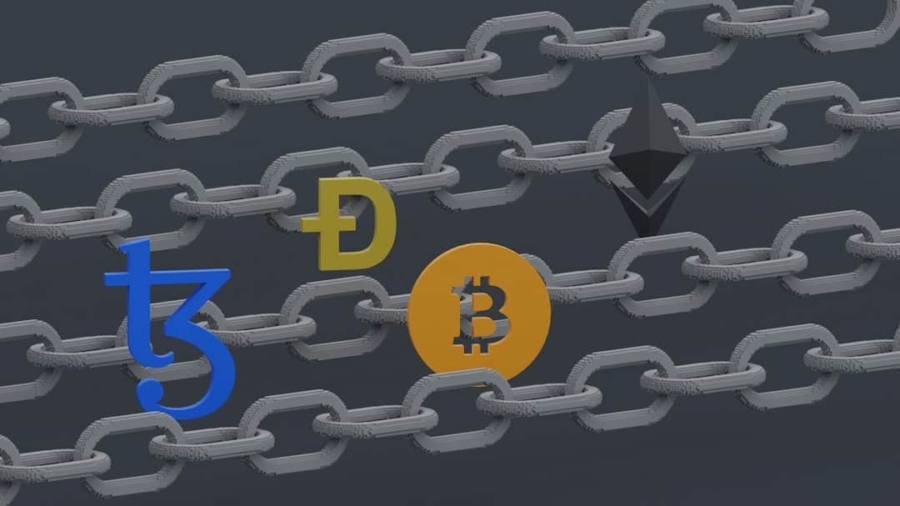Cryptojacking is a form of cybercrime that involves the unauthorized use of someone else’s computing resources to mine cryptocurrency. This illicit activity typically occurs without the victim’s knowledge or consent, allowing cybercriminals to profit from the computational power of compromised devices. The term itself is a portmanteau of “crypto,” referring to cryptocurrencies like Bitcoin and Ethereum, and “jacking,” which implies theft or hijacking.
As cryptocurrencies have surged in popularity and value, so too has the prevalence of cryptojacking, making it a significant concern for both individual users and organizations alike. The mechanics of cryptojacking can vary, but the end goal remains the same: to generate cryptocurrency without incurring the costs associated with hardware and electricity. Cybercriminals often deploy malicious scripts or software that can run in the background of a victim’s device, utilizing its processing power to solve complex mathematical problems required for mining.
This not only drains the device’s resources but can also lead to slower performance and increased energy consumption. As a result, cryptojacking poses a dual threat: it undermines the integrity of personal and organizational devices while simultaneously contributing to the broader issues of cybersecurity.
Key Takeaways
- Cryptojacking is the unauthorized use of someone else’s computer to mine cryptocurrency.
- Cryptojacking works by using malicious software to secretly use a device’s processing power to mine cryptocurrency.
- Signs that your device is being Cryptojacked include slow performance, overheating, and increased energy usage.
- The dangers of Cryptojacking include reduced device performance, increased energy costs, and potential data breaches.
- To prevent Cryptojacking, use ad-blocking and anti-malware software, keep your software updated, and consider using browser extensions for added protection.
How does Cryptojacking work?
Browser-Based Mining: The Invisible Threat
In browser-based mining, attackers embed JavaScript code into compromised websites. When you visit one of these sites, the script activates and begins using your CPU power to mine cryptocurrency. This method is particularly insidious because it can occur without any visible signs, leaving you unaware that your device is being exploited. You may simply think your device is running slowly due to other reasons.
Malware-Based Cryptojacking: A More Traditional Form of Cyber Intrusion
Malware-based cryptojacking involves more traditional forms of cyber intrusion. Cybercriminals distribute malicious software through phishing emails, infected downloads, or compromised applications. Once installed on your device, this malware can operate stealthily in the background, often evading detection by traditional antivirus programs.
The malware can be designed to target specific cryptocurrencies or mining pools, optimizing its operations for maximum efficiency. It is essential to be aware of these threats and take necessary precautions to protect your device and resources from cryptojacking.
Signs that your device is being Cryptojacked
Detecting cryptojacking can be challenging due to its covert nature, but there are several telltale signs that may indicate your device is being exploited. One of the most common symptoms is a noticeable decrease in performance. If your computer or mobile device suddenly becomes sluggish, experiences frequent crashes, or takes longer than usual to complete tasks, it could be a sign that cryptojacking software is consuming significant processing power.
Another indicator is an unusual increase in energy consumption. Cryptojacking requires substantial computational resources, which can lead to higher electricity bills as devices work harder than normal. Additionally, if you notice your device overheating or its fans running at high speed even when performing simple tasks, this could suggest that cryptojacking activities are taking place.
Monitoring your system’s resource usage through task managers or performance monitors can help identify any abnormal spikes in CPU or GPU usage that may be linked to cryptojacking.
The dangers of Cryptojacking
The dangers associated with cryptojacking extend beyond mere inconvenience; they can have serious implications for both individuals and organizations. For individuals, the most immediate risk is the degradation of device performance. As cryptojacking software consumes resources, it can lead to slower response times, increased wear and tear on hardware components, and ultimately a shorter lifespan for devices.
This can result in costly repairs or replacements. For businesses, the stakes are even higher. Cryptojacking can lead to significant financial losses due to increased operational costs and decreased productivity.
Moreover, if sensitive data is compromised during a cryptojacking attack, organizations may face reputational damage and legal repercussions. The potential for data breaches also raises concerns about compliance with regulations such as GDPR or HIPAA, which mandate strict data protection measures. In essence, cryptojacking not only threatens individual devices but also poses a broader risk to organizational integrity and security.
How to prevent Cryptojacking
Preventing cryptojacking requires a multi-faceted approach that combines technological solutions with user awareness and best practices. One of the most effective strategies is to ensure that all software and operating systems are kept up-to-date with the latest security patches. Cybercriminals often exploit vulnerabilities in outdated software to gain access to devices, so regular updates can significantly reduce this risk.
Additionally, employing robust security measures such as firewalls and antivirus programs can help detect and block potential cryptojacking attempts before they take hold. Many modern security solutions come equipped with features specifically designed to identify mining scripts and other malicious activities associated with cryptojacking. Furthermore, users should be cautious when downloading applications or clicking on links from unknown sources, as these are common vectors for malware distribution.
Best practices for protecting your devices from Cryptojacking
In addition to technical safeguards, adopting best practices for device usage can further enhance protection against cryptojacking. One key practice is to regularly monitor system performance and resource usage. By keeping an eye on CPU and GPU activity through built-in system tools or third-party applications, users can quickly identify any unusual spikes that may indicate cryptojacking.
Another important measure is to utilize browser extensions designed to block mining scripts. Many popular web browsers offer add-ons that can prevent unauthorized mining activities while browsing the internet. These extensions work by detecting and blocking known mining scripts, providing an additional layer of defense against cryptojacking attempts.
Users should also consider using ad blockers, as many cryptojacking scripts are embedded within online advertisements.
Tools and software to detect and prevent Cryptojacking
Several tools and software solutions are available specifically designed to detect and prevent cryptojacking activities.
Its real-time protection features can identify suspicious activities and block them before they cause harm.
Another effective tool is No Coin, a browser extension that blocks cryptocurrency mining scripts from running on websites visited by users. This extension is compatible with popular browsers like Chrome and Firefox and provides an easy way for users to safeguard their devices while browsing online. Additionally, security suites like Norton and Kaspersky include features aimed at detecting cryptojacking attempts as part of their broader cybersecurity offerings.
What to do if you suspect your device has been Cryptojacked
If you suspect that your device has been compromised by cryptojacking, immediate action is essential to mitigate potential damage. The first step is to disconnect from the internet to prevent further exploitation of your device’s resources. This will also help protect any sensitive information stored on your device from being accessed by cybercriminals.
Next, run a comprehensive scan using reputable antivirus or anti-malware software to identify and remove any malicious programs associated with cryptojacking. Follow up by checking your system’s resource usage through task managers or performance monitors to ensure that CPU and GPU activity returns to normal levels after removing any threats. If issues persist or if you suspect that sensitive data may have been compromised, consider seeking professional assistance from cybersecurity experts who can conduct a thorough investigation and provide guidance on securing your device against future attacks.
By taking proactive measures and remaining vigilant about potential threats, users can significantly reduce their risk of falling victim to cryptojacking while maintaining the integrity and performance of their devices.
If you are interested in learning more about the latest marketing technologies for 2023, check out this article here, you can ensure that your systems are secure and running efficiently. Additionally, implementing the best software for project management, as outlined in this article here, can help you streamline your processes and prevent potential security threats like cryptojacking.
FAQs
What is cryptojacking?
Cryptojacking is the unauthorized use of someone else’s computer to mine cryptocurrency. It involves installing malware on a victim’s computer, which then uses the computer’s processing power to mine cryptocurrency for the attacker.
How does cryptojacking occur?
Cryptojacking can occur through various methods, including phishing emails, malicious websites, and compromised software. Once the malware is installed on a victim’s computer, it runs in the background without the user’s knowledge.
What are the signs of cryptojacking?
Signs of cryptojacking include a noticeable decrease in computer performance, overheating of the computer, and increased electricity usage. Additionally, if a user notices unfamiliar processes running in the background, it could be a sign of cryptojacking.
How can I prevent cryptojacking?
To prevent cryptojacking, users should regularly update their software and operating systems, use ad-blocking and anti-cryptojacking browser extensions, and be cautious of suspicious emails and websites. Additionally, using reputable security software can help detect and prevent cryptojacking.
What should I do if I suspect cryptojacking?
If you suspect cryptojacking, you should immediately scan your computer for malware using reputable security software. Additionally, you should monitor your computer’s performance and electricity usage, and consider seeking professional assistance if necessary.



